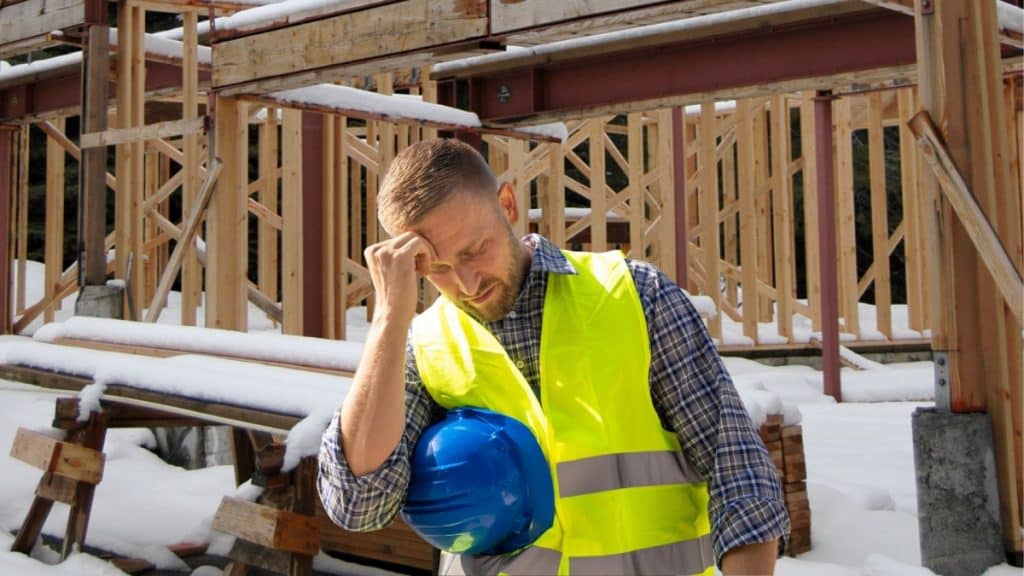The construction industry is famously at the mercy of many external factors, none more capricious and unpredictable than the weather. You can’t overemphasize the havoc bad weather can wreak on construction timelines – we’re talking serious setbacks and major cost blowouts. Staying on schedule requires being one step ahead of Mother Nature, and that means planning for those unpredictable weather-related disruptions.
When disruptions strike, the stakes are higher than just getting back on schedule – your entire operation is on the line. For construction to succeed, three key elements must align. First, workers must be protected from harm. Second, materials and structures must meet the highest standards. And third, every activity must be executed with precision and speed. Imagine being stalled by a torrential downpour or delayed by a sweltering heat wave – it’s time to tackle the tricky business of dealing with the weather in construction and arm ourselves with solid strategies to counter its impact.
The importance of being prepared for these disruptions extends beyond merely keeping a project on track. It involves ensuring the safety of workers, the integrity of materials and structures, and the overall productivity of construction activities. As we delve deeper into this topic, we’ll explore the multifaceted challenges that weather presents to construction and outline strategies to mitigate its impact.
Understanding the Impact of Weather on Construction
Weather affects construction activities in myriad ways. Safety risks escalate under extreme weather conditions, putting workers at significant risk. High temperatures, for instance, can lead to heat exhaustion, while cold spells increase the likelihood of hypothermia. Moreover, material integrity can be compromised by moisture, wind, and temperature fluctuations, affecting everything from curing times for concrete to the malleability of steel. Worker productivity also takes a hit, with unfavorable weather conditions leading to slower work rates and increasing the likelihood of errors.
Common Weather Challenges Faced in Construction
The most common weather challenges in construction include:
- Extreme temperatures: Both high and low temperatures can halt construction activities by affecting worker safety and material efficacy.
- Precipitation: Rain, snow, and even ice can delay many types of construction work, especially those involving excavation and foundational work.
- Wind: High winds can be dangerous for workers, particularly in high-rise construction, and may damage unsecured materials and partially completed structures.
- Natural disasters: Hurricanes, tornadoes, floods, and wildfires not only stop work in its tracks but can also require a significant amount of cleanup and rebuilding.
Pre-Construction Weather Planning
Incorporating weather considerations during the planning stage can significantly reduce weather-related disruptions. This involves understanding the typical weather conditions for the project’s location and planning construction phases accordingly. Seasonal planning and long-term weather forecasting play critical roles in this process, allowing project managers to schedule more vulnerable activities during periods of expected mild weather.
Developing a Weather Response Plan
An effective weather response plan contains detailed safety protocols and contingency measures for various weather scenarios. This plan should be flexible, with clear guidelines for when work should pause and resume based on weather conditions. Safety of the crew is paramount, so decisions should err on the side of caution.
Adopting Best Practices for Weatherproofing
Practical measures for protecting construction sites and materials from weather damage include using weather-resistant materials and employing temporary structures to shield work areas. These measures not only protect ongoing work but also reduce the amount of clean-up and rework necessary after bad weather passes.
Scheduling Flexibility and Buffer Time
Building buffer time into the construction schedule allows for unexpected weather delays. Flexible work schedules that can adapt to shorter periods of workable weather can help maintain productivity even when conditions are not ideal.
Safety Measures for Adverse Weather Conditions
Effective safety measures for adverse weather conditions involve training, proper equipment, and clear communication channels. Workers should know how to recognize weather hazards and have access to the necessary personal protective equipment to mitigate these risks.
Communication is Key
Keeping all stakeholders informed about weather-related disruptions and schedule changes is fundamental. Clear and timely communication can help manage expectations and facilitate the necessary adjustments without significant conflict or confusion.
Leveraging Construction Management Software in Weather Challenges
Construction management software like premiercs.com can be a powerful ally in anticipating and responding to weather conditions. With features for real-time communication, scheduling flexibility, and mobile accessibility, these tools help keep projects on track despite weather disruptions.
Utilizing Weather Downtime Productively
Weather-induced downtime doesn’t have to be a total loss. This time can be used for administrative tasks, equipment maintenance, or further training, ensuring that once the weather clears, the project can proceed efficiently.
Insurance and Financial Precautions
Insurance and financial precautions are essential for mitigating the cost impact of weather-related construction delays. Understanding and investing in the right types of insurance can protect against significant financial loss due to weather events.
Post-Weather Event Assessment and Recovery
After a weather event, assessing damage, documenting impacts, and implementing recovery steps are essential to getting the project back on schedule. This process requires thorough documentation and communication to ensure all damages are accounted for and addressed.
Innovative Solutions for Weather Challenges
Emerging technologies and innovative methods offer new solutions for predicting, preparing for, and responding to weather challenges in construction. Drones, for instance, can inspect sites for weather damage safely and efficiently, while advanced forecasting tools can provide more accurate weather predictions.
Conclusion
Proactive weather management is key to maintaining construction schedules in the face of weather unpredictability. In the countdown to groundbreaking, anticipation gives way to anxiety when bad weather looms. The remedy? Project managers must assume the role of meteorologist, plotting their project’s trajectory around treacherous weather conditions and padding their timelines with creative problem-solving. When extreme weather hits, construction sites can quickly become dangerous workplaces; that’s why forewarned project managers take the necessary steps to safeguard their teams and keep projects on track, come rain or shine.
